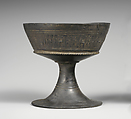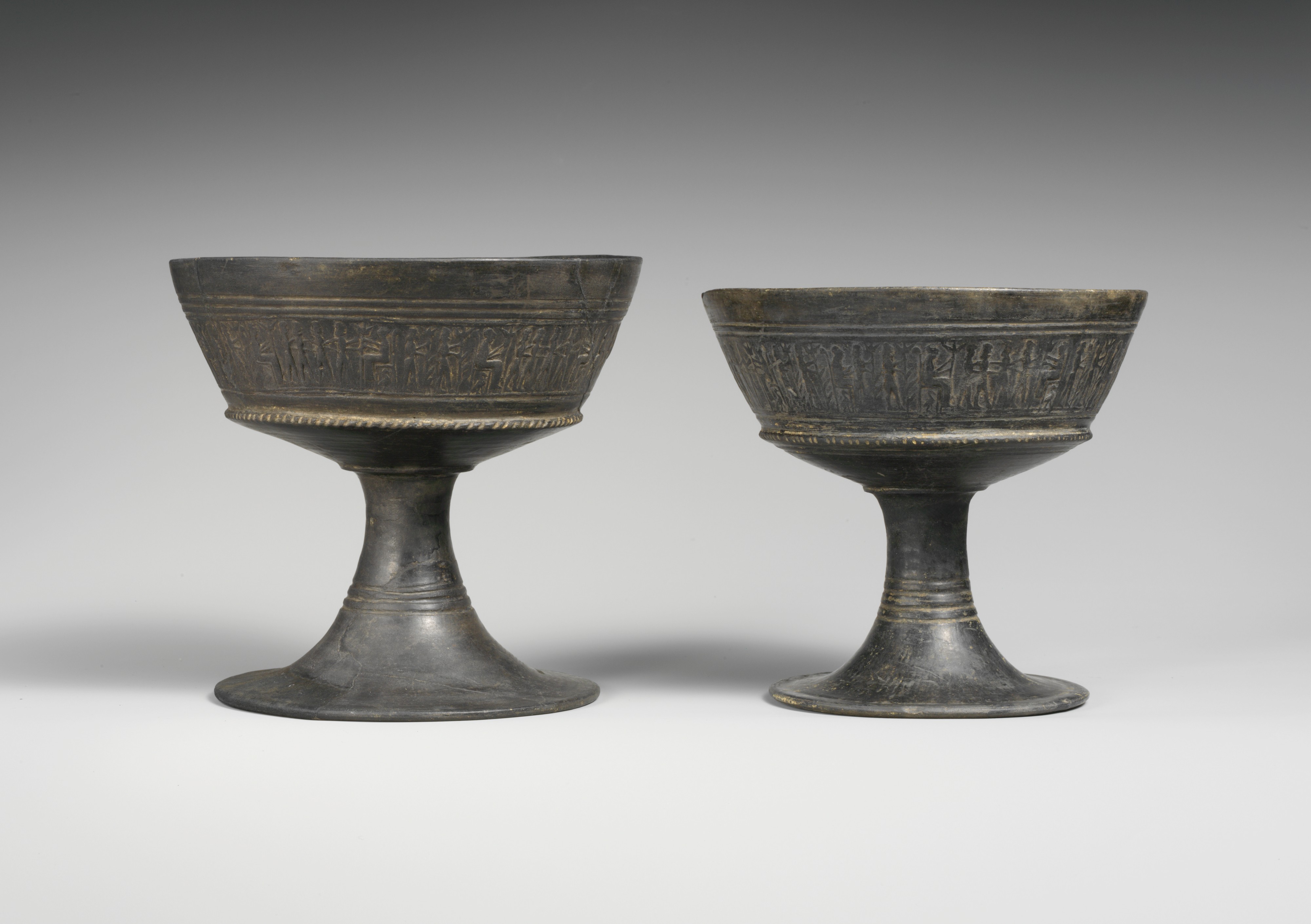Terracotta chalice
The simple elegance of this shape ensured its popularity throughout much of Etruria from about 625 to 500 B.C. The figural friezes were made by pressing a carved cylinder seal into the leather-hard clay before firing. In this case, both are identical and depict seated figures, perhaps members of the nobility, in the company of standing attendants. The subject, its specific meaning unknown, is associated with chalices made at Chiusi.
Due to rights restrictions, this image cannot be enlarged, viewed at full screen, or downloaded.
This artwork is meant to be viewed from right to left. Scroll left to view more.



